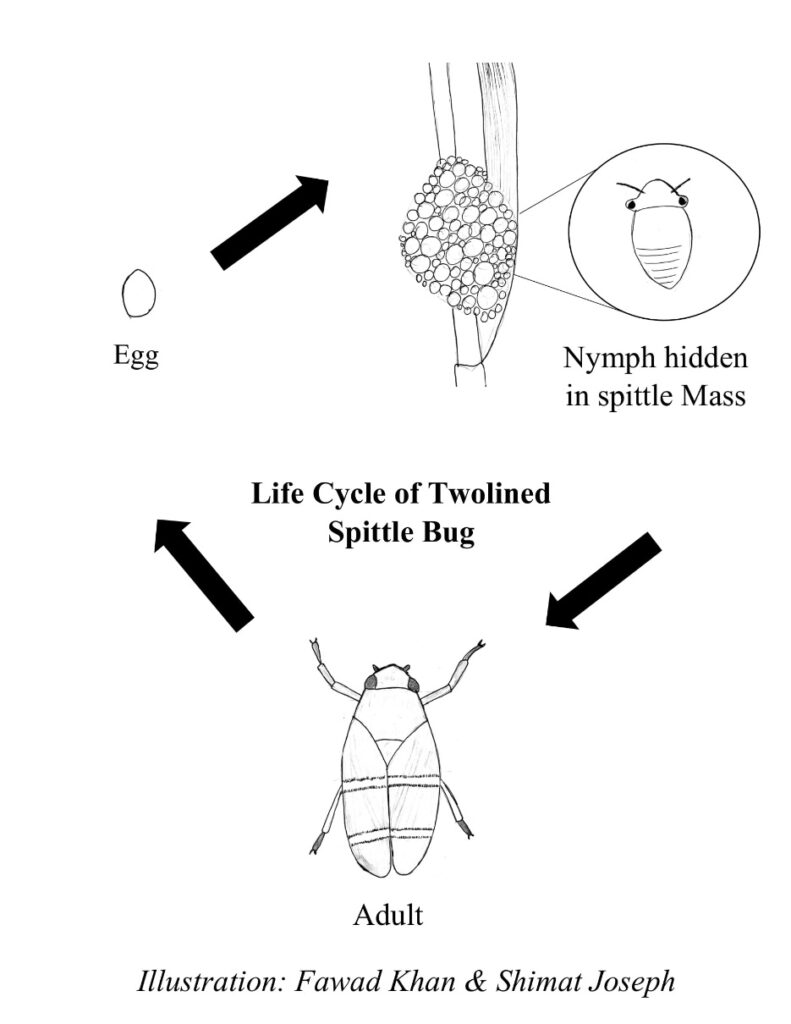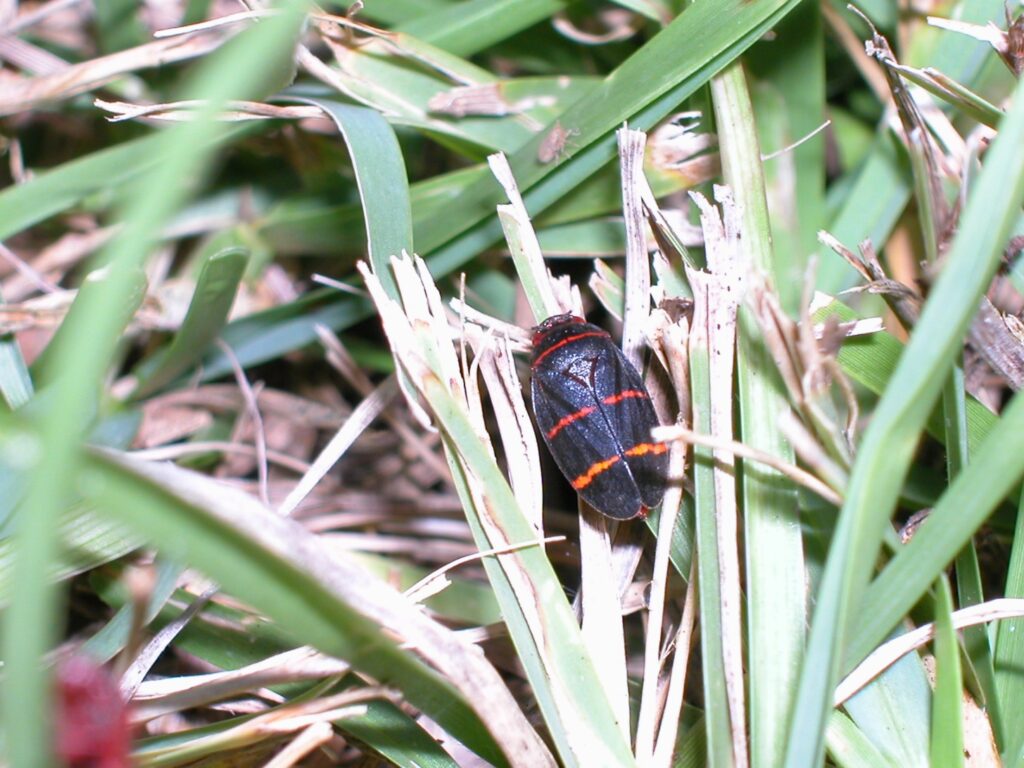If you’ve been out in your garden or lawn recently you may have seen what looks like a wad of spit in your lawn on a plant.
This is actually the result of the aptly named twolined spittlebug. Spittlebugs are both turf and ornamental plant pests. The “spittle mass” you may have seen is the feeding site of nymphs. Spittlebugs begin in the egg stage when laid at the base of the plant or grass blade. These orange eggs are laid singly or in clusters and overwinter to hatch in the spring. They then move up the plant to feed on the inside of plants. They form the spittle mass as a defensive strategy to keep themselves hidden and from drying out in the sun. The mass itself is formed from the inner sap of plants. More than one nymph can be found inside of these masses. After 34 to 60 days the nymph development cycle results in an adult spittlebug. These are black-winged insects with 2 orange stripes on the wings. Depending on the temperature, they can live for 2 weeks to 42 days. They will complete a second generation for the year which will then lay the overwintering eggs.

They do minimal damage to ornamental plants but can become a major pest in turf grass.
The two-lined spittlebug uses its needle-like mouthparts to extract the inner juices of the plant to feed and form its spittlemass. The resulting damage to the plant first appears as yellow discoloration that becomes brown or purple. The blades will eventually completely wilt and die.
Centipede grass is particularly susceptible to these pests, but zoysia and bermudagrass are at risk as well. There are currently no spittlebug-resistant turf cultivars but that may change as research continues.
In very hot weather, spittlebug nymphs will go deeper into the soil, so the best time to check for nymphs and to apply pesticides to turfgrasses is late in the day when temperatures are cooler and the nymphs are higher on the plants.
The second generation tends to do more damage so it is likely to be a worse problem in August and September as the second generation matures. Insecticide treatment in heavily infested areas should be timed for July. It is recommended to mow and irrigate the grass several hours before applying treatment late in the day.
Spittlebugs are associated with a heavy thatch layer and you may even notice your lawn feel “squishy” due to the large amounts of spittle masses present within the thatch. Preventing a heavy layer of thatch from accumulating is a cultural strategy for avoiding these pests.

Photo: Clint Waltz, University of Georgia

Photo: Charles T. Bryson, USDA Agricultural Research Service, Bugwood.org
Contact your local extension office for insecticide and other control recommendations.
Sources:
Leave a Reply